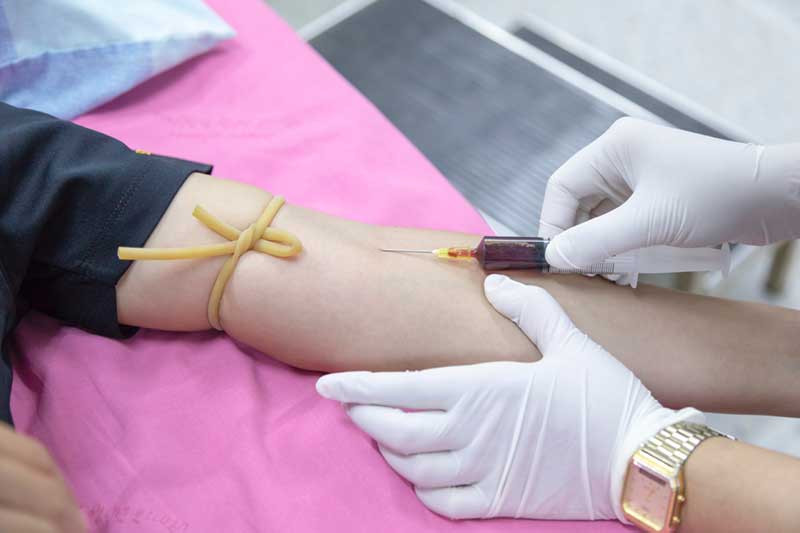Infertility is on the rise as a health and wellness issue and spas are well positioned to take care of those dealing with it.
After many years of shame and silence around the topic of infertility, people are finally opening up about the struggles we often go through in our quest to have children. We’re talking about the hormone treatments, the procedures, the failures, the losses, the pain and the gain, and the impact on our bodies and psyches.
And as we become more comfortable discussing this often uncomfortable topic, more are coming forward to seek out help, advice, and information. As well as looking towards wellness practitioners to help us understand and cope with the associated physiological and psychological impact of infertility and fertility treatments.
While there has until recently been mostly silence around the subject of infertility, it affects approximately 12.5% of couples. In the Unites States, 7.4 Million women between the ages of 15-44 have reported difficulty getting and staying pregnant, and 7.5% of men have reported seeing a fertility doctor at least once according to the U.S. Centers for Disease Control and Prevention.

A need for insight and information around infertility
One place that people are going to seek information and insight is the recently launched online magazine pregnantish.com. We talked to pregnantish Media founder Andrea Syrtash about this issue that is emerging from behind closed doors and its potential impact on the wellness industry.
Syrtash says she created pregnantish because she felt there was a lack of good resources around the issue.
“Infertility is both a medical issue and a lifestyle one,” Syrtash explains. “It affects our lives and relationships deeply, and we need well-sourced professional lifestyle content around it. I often say that infertility is often positioned as a lifestyle issue and served with medical content and I wanted to flip the paradigm and say it’s a medical issue that needs lifestyle content.
Syrtash has been touched personally by the experience. She has undergone approximately 18 fertility treatments in nearly ten years of trying to conceive. “The process is so isolating and tough,” she says. “And I didn’t want people to feel as alone as I did over all these years. About one in eight couples struggle with fertility challenges and this group is often underserved by media and lifestyle brands; but that’s starting to change!”
Social media has been a game-changer when it comes to the conversation around fertility issues, Syrtash says, adding that “More and more communities are speaking up and speaking out about pregnancy loss and struggles to conceive. Celebrities and public figures are also sharing their experiences. Women are more empowered than ever to share their stories, take control of their bodies and be proactive about their health.”

Infertility takes its toll on the body and mind
Fertility issues affect both men and woman and have a range of health impacts. Emotional stress can result in anxiety and depression. Massive hormone doses take a toll on the body as do the treatments themselves, which are invasive and often painful, and have low success rates. For example, the success rate for IVF in women aged 40-42 is about 10% on average per cycle. Because of this, people often undergo several treatments that can result in many pregnancies and losses in quick succession. All of this can leave a person, sick, exhausted, and discouraged. The physical toll is worse than most people realize.
(For example, before delivering a live baby, I personally went through nine fertility treatments, one miscarriage, two ectopic pregnancies, two surgeries – one to remove one of my fallopian tubes – and one treatment with the chemotherapy drug Methotrexate [to treat one of the ectopics] in a period of 20 months. It was exhausting, but it is not that unusual.)
People going through infertility are looking for help
People are looking for help, and they have the means and the drive to seek it out.
“This group is hungry for support and resources that comfort them during this stressful process of fertility treatments and/or infertility,” Syrtash says. “Every single day I hear from people asking us at pregnantish if we have suggestions on how to stay sane, in balance and more relaxed during the ‘2 week wait’ [between a treatment and finding out if you’re pregnant] or when their bodies and schedules are overwhelmed with treatments.”
She adds that people battling infertility and/or undergoing fertility treatments are a conscious, educated and often an affluent group. “Sadly, you can’t do IVF in many parts of the US unless you have funds since the average IVF treatment can run about $15K with the necessary drugs.”
The price of conception
The cost of treatments such as IVF (In Vitro Fertilization) and IUI (Intrauterine Insemination), and the drugs that go with them varies dramatically around the world. Prices range from as low as $2,250 for IVF in China to, as Syrtash said, $15,000 in some US states.
Success rates and treatment quality also vary by location. Because of these disparities, as well as legal prohibitions in certain countries, fertility tourism, or reproductive tourism is on the rise. People often travel from countries like Germany, for examples, which places restrictions on the number of embryos that can be created per cycle, to get IVF elsewhere. Popular destinations for fertility treatments include Spain, the Czech Republic, and Mexico.
Opportunities for the wellness industry
Brands should want to reach these people, says Syrtash. In fact, she and pregnantish are forming partnerships to address some of these issues.
“Because we got so many questions about wellness and services, we’ve started partnerships with some amazing companies like doTERRA Essential Oils (they’re creating a “pregnantish Perk Package” for our audience).” They also recently partnered with Theralogix vitamins and supplements on an event and are in talks with an at-home massage service.
“We want to align with companies that are sensitive to this audience and offer top quality products, services and experiences. Ultimately, we want to pamper our audience with things that will help them find at least a slice of calm during the very stressful experience.”
And spas are in an excellent position to help this group, offering services in answer to the almost limitless list of needs and pain points.
“This audience is so grateful to the brands and companies that serve us and pay attention to our pain points and our goals of creating a family,” Syrtash says. “It’s a very vulnerable process, and wellness is a critical piece for the vast majority of people going through it.”
Spa Executive magazine is published by Book4Time, the world’s most innovative spa, salon, wellness, and activity management software. Learn more at Book4Time.com




